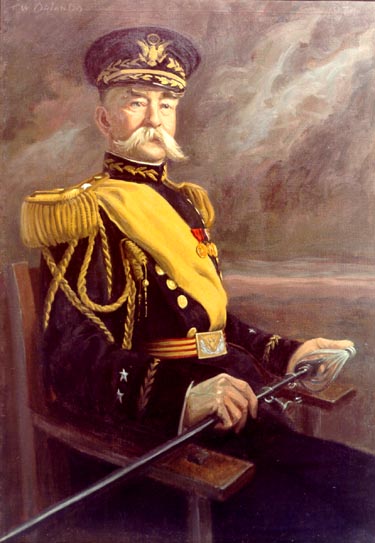
William Wallace Wotherspoon was born in Washington, D.C., on 16 November 1850; was educated in private schools; served aboard ship as a mate in the United States Navy, 18701873; was commissioned a second lieutenant and assigned to the 12th Infantry, October 1873; served in the West during the Indian wars as a troop officer and quartermaster, 18741881; served with the 12th in northern New York, 18811887; married Mary C. Adams, 1887; was on sick leave 18881889; superintended the enlargement of the Soldiers Home in Washington, 18891890; served at Fort Sully and at Mount Vernon Barracks, where he trained a company of Apache prisoners, 18901894; was promoted to captain, 1893; was aide to General Oliver O. Howard, commander of the Department of the East, 1894; was professor of military science and tactics at Rhode Island College, 18941898; was on recruiting duty at Fort McPherson and organized the 3d Battalion, 12th Infantry, 1898; served in the Philippines against insurgents and as collector of customs at Iloilo, 18991901; was promoted to major and transferred to the 30th Infantry, 1901; commanded the 2d Battalion, 6th Infantry, at Fort Leavenworth and then taught at the General Staff College, 19021904; was promoted to lieutenant colonel and assigned to the 14th Infantry, 1904; was transferred to the 19th Infantry and graduated from the Army War College, 1905; was director of the Army War College, 19041906; was chief of staff of the Army of Cuban Pacification, 19061907; was acting president of the Army War College and chief of the Third Division, General Staff, 1907; was promoted to brigadier general, October 1907; was president of the Army War College, 19071909 and 19101912, and largely instrumental in transforming it from an adjunct of the General Staff to an autonomous educational institution; was assistant to the chief of staff, 19011910 and 19121914; was promoted to major general, May 1912, serving as commander of the Department of the Gulf until September; was chief of staff of the United States Army 21 April15 November 1914; called attention to shortages of officers and noncommissioned officers for Army missions, emphasized the need to reevaluate coast defenses to meet heavier-gunned battleships, saw establishment of an aviation section in the Signal Corps and the completion of the Panama Canal; retired from active service, November 1914; served as superintendent of public works for the state of New York, 19151920; died in Washington, D.C., on 21 October 1921.
The Artist
Thomas W. Orlando (1931) received a bachelor of arts degree from City College of New York in 1954 and then pursued advanced studies at the Art Students League, the National Academy of Design, the Cape School of Art, and the Brooklyn Museum. During a two-year tour in the United States Navy (19561957), he directed a number of art projects for the Office of Public Information. He teaches advanced drawing and painting at the Pratt-Phoenix School and maintains a studio at Sheffield, Massachusetts. He has had one-man shows at the Berkshire Museum, Newsweek Gallery 10, and a number of private galleries, and has been represented in group shows at Allied Artists, National Art Club, Salmagundi Club, Pratt Institute Gallery, and others. His portrait of General William W. Wotherspoon was created from photographs.
William Wallace Wotherspoon
By Thomas W. Orlando
Oil on canvas, 46" x 32", 1974
[102]

page updated 30 April 2001